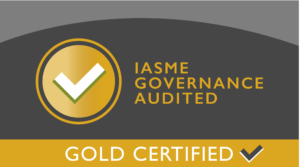
Website accessibility and your business
Website accessibility is not just a matter of law, it is also the right thing to do. But many SMEs do not realise that making your business accessible to disabled people is also based on sound business sense.
Ensuring that your business and website are accessible to all who want to use it can be an intimidating prospect. But, it is important to take steps towards this goal. Government statistics state that 1 in 5 people in the UK has a long-term illness, impairment or disability. So if you don’t make accessibility an issue for your business, you could prevent a fifth of your customers from giving you’re their patronage.
And if your website is not accessible but the next website in the search engine results is? You’re practically directing the disabled customer to your competitor.
Website Accessibility – What does the law say?
According to Web Usability:
“The accessibility of a UK web sites is covered by the Equality Act 2010. This protects all individuals from unfair treatment and promotes a fair and more equal society. Site owners are required to make ‘reasonable adjustments’ to make their sites accessible to people with disabilities. The act requires service providers to anticipate the needs of potential disabled customers for reasonable adjustments.”
What does it mean to trade ethically?
While the law tells us that we should consider “reasonable adjustments”, our sense of doing what is right should be more powerful. A profitable business is based on strong values and a commitment to ethical practices..
Some may argue revamping a website to make it accessible to disabled customers or clients is too costly. However, the lack of consideration for an excluded population could be more expensive to your long-term prosperity. People with impaired vision, motor difficulties, cognitive impairments or learning disabilities, deafness, or impaired hearing have a right to access the opportunities you offer.
It is the right thing to do – and when you make these efforts, all your customers know that you are committed to doing the right thing.
How to make your website accessible
Start by having an accessibility audit to find out what needs to be done. You can hire specialists to do this but a quick and easy place to start is the WAVE Web Accessibility Evaluation Tool.
When you know what needs to be done, have a timescale for fixing problems. If you are unable to do everything right away, have a realistic roadmap.
-
- Don’t use a tiny font and make sure there is plenty of contrast between the background colour and the font colour
- Use straight-forward language, avoid jargon and don’t over-complicate things
- Include sub-headings and use H1, H2 and H3 tags rather than just bold, to help screenreader users
- Write in short sentences and short paragraphs
- Use alt text to describe images
- In video content:
- use subtitles or closed captions
- use a voiceover when information is presented visually on screen
- don’t use strobe lighting or flashing images
- For audio content, provide transcripts
- When using hashtags on social media, capitalise the first letter of each word so that screenreaders don’t garble them, e.g. #MakeYourWebsiteAccessible rather than #makeyourwebsiteaccessible
More advanced techniques including having a button on each page that reads the text out loud, having links that enable website visitors to quickly and easily edit text size or colour or contrast. Also, checking that your site layout makes sense in the context of somebody navigating using keyboard controls.
The aim, ultimately, to conform to level Double-A of the World Wide Web Consortium W3C Web Content Accessibility Guidelines 2.0 Keep an eye on the #a11y hashtag on social media for best practice tips.



